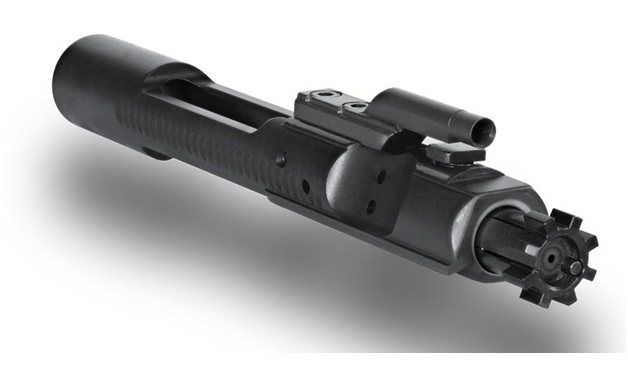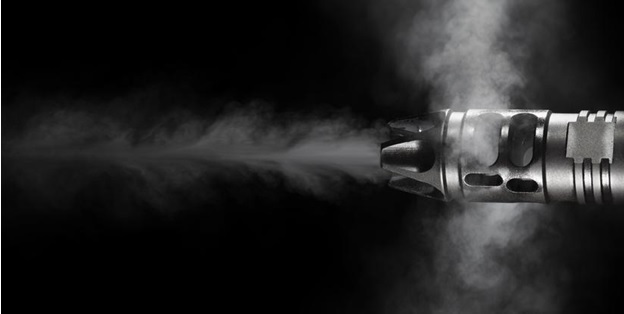AR15 Kits: Parts to Upgrade During the Build
Jul 15th 2024
Take a look at the following AR15 kit we offer here at SARCO. It has every AR15 part you need, minus the lower receiver (which is the part serialized and therefore recognized by the ATF as the “firearm” itself) to build a complete, functioning rifle.
Now, a complete, functioning rifle you can certainly build with it, but at the same time, it’s a templated solution that, in its current state, isn’t optimized for making customizations or for adjusting performance.
That’s why we’re suggesting you upgrade the following parts during the project. You don’t need to, but you can boost performance by doing so.
The Bolt Carrier Group

The bolt carrier group is probably the best candidate for a component to swap out during the process.
Why? There are a few good reasons for this. They all have to do with the (relative and potential) shortcomings of a mil-spec, phosphate coated BCG.
The mil-spec BCG is a good thing. It works, and it’s non-reflective. It’s also corrosion resistant (enough) but has a bit of tooth, which means it will need a modicum of liquid lubricant to keep things moving fluidly.
There are all different sorts of modern BCGs with advanced coatings, all of which offer superior hardness and permanent dry lubricity when compared to phosphate coatings.
Some of these include black nitride, titanium nitride (which has an attractive gold tone appearance) DLC, or diamond-like carbon, and nickel boron.
In all cases, they offer better permanent dry lubricity, which means they require less liquid lubrication to keep moving smoothly, as well as that they are easier to clean and generally easier to maintain.
All of these coatings, despite their higher costs, are harder and more corrosion-resistant than mil-spec phosphate coatings, too.
Replacing one will potentially improve performance and cycling, reduce lock time, and since you’ll need to use less liquid lubrication, will keep the BCG cleaner for longer, and less suspect to abrasion, too.
The Pistol Grip
The A2 pistol grip has been a standard since, well, forever. It is relatively ergonomic, made of tough, resilient polymer material, and helps reduce fatigue while ensuring accurate shot placement.
But is it the best AR15 grip out there? Far from it. There are all different sorts of AR15 grips out there that offer the same (if not better) ergonomics, with less fatigue and in a more natural position, enabling potentially greater accuracy.
Another thing to take into consideration is that there are some skeletonized AR15 grips out there that offer the same performance as a mil-spec A2 grip, but which are substantially lighter than the former version.
This is beneficial because while there are drawbacks to skeletonizing other parts of the rifle (skeletonization lightens the rifle but makes the parts harder to clean, and allows dust and dirt in) it really doesn’t matter how dirty your grip gets - so it’s a moot point.
The Muzzle Device
Take a look at the picture of the parts kit above. See that cage on the front of the barrel? That’s a flash hider.
Flash hiders are so common in AR15 kits that they are more or less a standard. The A2 flash hider, like the A2 pistol grip, is a mainstay on the AR, especially those patterned after M16s.
The thing about the A2 flash hider is, though it has a use case, it doesn’t do much. Or rather, we might say it doesn’t do as much as some other muzzle devices.
A flash hider’s main job is to obscure the muzzle flash to prevent the sight picture from being disrupted. This helps the shooter keep a clear and unobstructed sight picture for rapid target reacquisition and faster, more accurate follow up shots.
Secondarily, a flash hider helps conceal a shooter’s position. But that’s of little consequence here.
In most applications, flash hiders take a backseat to muzzle brakes. These muzzle devices redirect gasses at the muzzle, redistributing the forces of recoil.
As a result, muzzle brakes can seriously diminish the force of recoil, sometimes by as much as 50%, while also cutting back on muzzle flip.
Cutting back on recoil and muzzle flip also plays a massive role in making fast, accurate follow up shots. Our recommendation is to swap the flash hider for a quality muzzle brake and take that advantage.

The Handguard
Go back and take a look at that picture again. See the handguard? It’s a tropical-style handguard sort of like what you’d see on an M16.
Does it offer a sure grip in lieu of a forend? Sure. Does it offer attachment points or much in the way of expandability? Hardly.
You see there is a bit of Pic rail over the upper, so you’re good to mount optics. Past that, this sort of handguard doesn’t offer much.
Our suggestion? Replace the handguard with either a quad rail (Picatinny) or a KeyMod or M-LOK rail system. These will offer the same good grip while affording you far, far more flexibility when it comes to expanding the rifle with attachments.
The Trigger
Last but not least, the trigger is a good candidate for replacement. Mil-spec triggers work, and they’re reliable. That’s about what it comes down to.
But for hunting, competition, or any sort of precision marksmanship, mil-specs and similar alternatives really just are OK, and that’s the best praise we can offer. Others would be more harsh in their estimation than this.
There are other, far better AR15 triggers out there, like TriggerTech triggers that use FRT, or “frictionless release technology” consisting of a free-floating roller between the sear and trigger, instead of sliding release.
The result? These replacement AR15 triggers are crisper, break more precisely, have no creep and an extremely short reset, and allow for more precise shot placement.
Again, this is not an upgrade you need to make, but there is a strong use case.
Start with an AR15 Kit and Make Upgrades Along the Way
Whether or not you choose to make any of these upgrades, starting with an AR15 kit is definitely a good way to go. If you do make any upgrades, you’ll still have the old part as a spare. So say you replace the BCG for a black nitride model, and after 10,000 rounds the gas rings wear out. You can plop in the old phosphate one as a replacement before you get your next upgrade. It’s a failsafe system with built-in redundant replacements.
Plus, building with a kit ensures you’ll have at least one of everything you need to complete the build. It’s more convenient and can be more affordable - all while allowing you the flexibility to make upgrades later on as you see fit.

